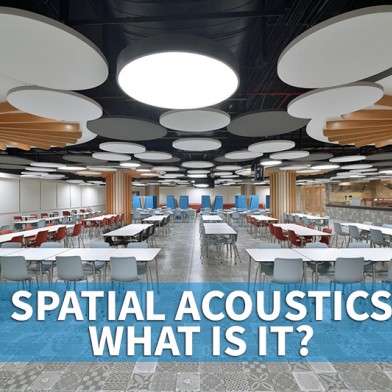Spatial acoustics - what is it?
- 17 October 2022 23:21:37
- Reviews: 0
- Views: 340
-

Room acoustics is an important applied part of physics that helps us solve the problems, pitfalls and problems associated with sounding large spaces, both outdoors and indoors. Whether it's a gigantic concert for tens of thousands of people in a football stadium, a theatrical performance in a club theatre, or designing car speakers, knowledge of sonic properties in these cases is absolutely essential. This article will explain the basics of room acoustics, give practical examples of how to use this knowledge, and last but not least, suggest some simple technical solutions for home acoustics.
How about sound and surround acoustics?
The key property of sound is its reflection. But we are getting ahead of ourselves, we will start from the very beginning, from the source. Sound is a mechanical wave. It propagates in waves through any material, causing its molecules to vibrate. What follows from this? This follows from the fact that we can hear both in the air and under water, or with the help of solid substances. But we won't hear anything in a vacuum where there are no molecules and therefore nothing to vibrate and propagate sound. So, if you heard the sounds of drifting spaceships in space movies, forget about them, there is nothing like this in real space.
Sound travels at a different speed in each medium, depending on the specific characteristics of the medium. But back to the sound reflection mentioned above. Why is it so important? Because it is the reflection that determines the acoustic properties of a limited space. If we had some ideal source of sound that floated somewhere high above the ground, sound waves would propagate around it equally in all directions. Everywhere around him it would be heard just as clearly, only with increasing distance from the source the sound weakened. Here's what sound propagation might look like under ideal conditions. But we will probably never hear them in normal listening.
In reality, sound travels unevenly because there are obstacles in its path. Most often these are the walls of the room, large objects such as cabinets, trees, people and the like. What happens when a sound wave hits such an obstacle? We have already said that sound propagates in all states of matter. Therefore, it must be propagated, for example, through the screen it encounters in a recording studio. This is true, but when sound hits an obstacle, two things happen. Some of the sound is absorbed—propagates further into the body hit by the sound—and some is reflected. The ratio between these two parts is called the sound absorption index and depends on the properties of the substance.
space design
Now that we know the basic properties of sound, we can put this knowledge into practice. What worries us most when working with spatial acoustics? It is incomprehensibility, such a distortion of sound that it becomes noise and turmoil, which only burdens the hearing apparatus of a person, but no longer transmits any information that he originally possessed. This is of course a problem, for example in noisy workplaces, where noise levels can easily exceed acceptable limits and endanger both productivity and, above all, the health of workers. Another typical example is halls with such an echo that the amplified music simply merges into a clot of incomprehensible noise.
How to fix it? We must shape the space in which we want the sounds to appear, and on the other hand, we must adapt the sounds to the available space. Now let's focus on this issue from the point of view of space. The more reflections, the less intelligible the sound. If there is, we first reduce the reflectivity. We replace bare shiny surfaces with porous or fabric ones, or simply cover the first with the second. This will dissipate the sound well, and it will not return to our ears and will not interfere. If that's not enough, we need to reduce the space and reduce the reflectivity again. It always helps in the end, you just have to find the right amount of reduction so that the space still meets our requirements and is economical to retrofit.
There are many options for how to do this specifically. Acoustic polyurethane foams are most often used for surface treatment. Space can be reduced with simple partitions filled with soundproofing. There are mobile screens, plexiglass, acoustic pressed plates and much more. In addition, if you get to the bottom of your conscience and sometimes just turn down the volume, the result is usually not long in coming.


